The Significance of Tarantula Food in Cambodia
Caring for a tarantula in Cambodia requires understanding its dietary needs. Providing the right tarantula food is crucial for the health, growth, and overall well-being of your pet. Just like any other pet, a tarantula needs a balanced diet to thrive. The availability of appropriate food sources is a key factor in successful tarantula keeping, especially in a location like Cambodia, where access to certain food items may differ compared to other regions. Understanding the local options and how to source the best quality food will directly impact your tarantula’s longevity and vitality. This guide delves into the best tarantula food options available in Cambodia, providing valuable insights for both novice and experienced tarantula keepers.
Understanding Tarantula Dietary Needs
Tarantulas are primarily insectivores, meaning their diet consists mainly of insects. However, not all insects are created equal when it comes to providing the necessary nutrients. The types of insects a tarantula consumes, along with their size and nutritional content, play a significant role in its overall health. It’s essential to understand that a tarantula’s dietary needs vary depending on its life stage. Spiderlings, juvenile tarantulas, and adult tarantulas all have different requirements. The frequency of feeding also changes as tarantulas mature. Young tarantulas often need to eat more frequently, while adults can go longer between meals. Understanding these needs is the first step in providing optimal care.
The Importance of a Balanced Diet
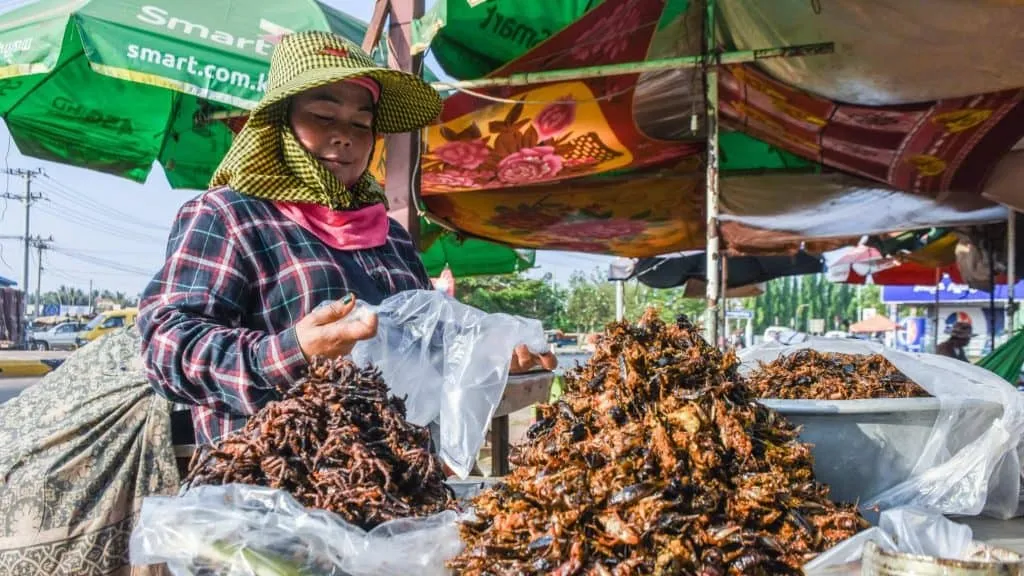
A balanced diet ensures your tarantula receives all the necessary vitamins, minerals, and proteins it needs to grow, molt successfully, and remain active. Providing a diverse range of insects helps prevent nutritional deficiencies. A diet solely based on one type of insect can lead to health problems. Regularly varying the types of insects offered, such as crickets, roaches, and mealworms, can provide a more complete nutritional profile. Additionally, the overall health of the insects you feed your tarantula also matters. Insects should be gut-loaded (fed nutritious food before being given to your tarantula) to maximize their nutritional value. A well-balanced diet is fundamental for a thriving tarantula.
Nutritional Requirements for Tarantulas
Tarantulas need a diet rich in protein for growth, especially during their molting stages. Protein is essential for building new tissues. They also require chitin, the main component of insect exoskeletons, which aids in the molting process. Vitamins and minerals, such as calcium, are also important for overall health and the development of strong exoskeletons. Providing these essential nutrients is usually achieved by feeding a variety of insects that are well-fed before being offered to the tarantula. Supplementing with commercial vitamin and mineral powders, while less common, can be considered, but only if the tarantula’s primary food sources are consistently lacking in essential nutrients. Monitoring your tarantula’s condition and adjusting its diet as needed are crucial for optimal health.
Identifying the Best Food Sources
In Cambodia, finding high-quality, readily available, and appropriately sized food sources for your tarantula is essential. Several options are available, each with its advantages and disadvantages. The key is to provide a diet that is both nutritious and safe for your pet. This includes considering the ease of sourcing the food, the cost, and the nutritional value. Always ensure the food source is free from pesticides and other harmful substances. Researching local suppliers and comparing prices can help you find the best options for your tarantula. Preparing and storing the food source correctly is also essential to maintaining its freshness and nutritional value.
Local Insects as a Primary Food Source
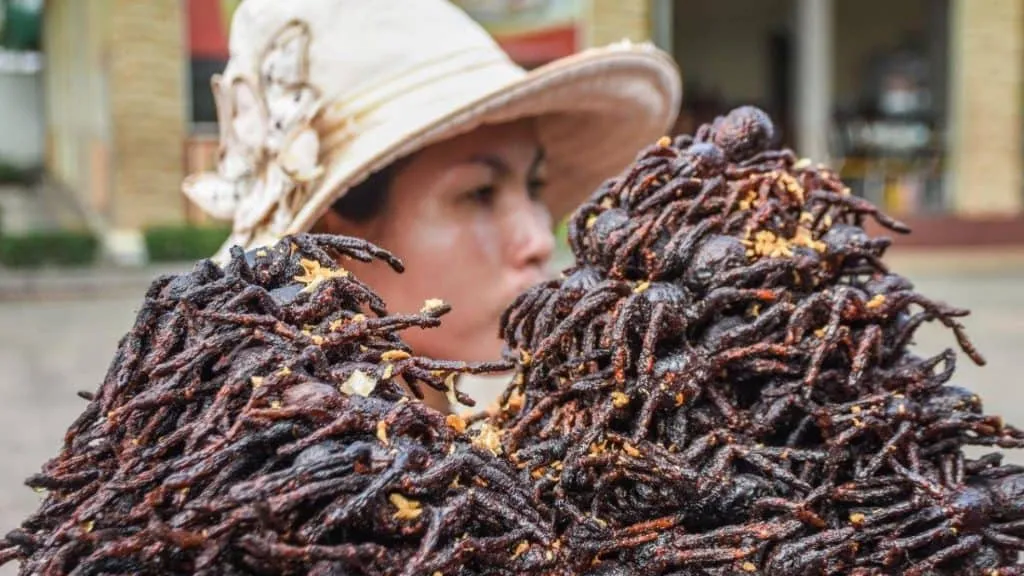
Local insects often serve as a primary food source because they are readily available and can be relatively inexpensive. The climate in Cambodia supports a wide variety of insect life, making it easier to find suitable prey. However, it is important to identify the species of insects you are using, ensuring they are safe and free from diseases. Avoid collecting insects from areas that might have been treated with pesticides or herbicides. If you collect insects yourself, carefully inspect them for any signs of illness or contamination. Consider the nutritional value of the insects you collect, as the quality of their diet will impact your tarantula’s health.
Crickets as a Staple Food
Crickets are one of the most popular staple food choices for tarantulas. They are relatively easy to breed and available at many pet stores in Cambodia. Crickets provide a good source of protein, making them suitable for both juvenile and adult tarantulas. The size of the crickets should match the size of your tarantula; avoid feeding crickets that are too large, as they can injure your pet. Gut-load the crickets before feeding them to your tarantula to enhance their nutritional value. This means feeding the crickets nutritious foods like vegetables, fruits, and commercial cricket feed. Regular gut-loading improves the health of your tarantula. Remember to remove any uneaten crickets from the enclosure to avoid stressing or harming your tarantula.
Roaches as a Nutritional Supplement
Roaches are another excellent food source for tarantulas, often considered a superior option due to their higher nutritional content and ease of breeding. Several species of roaches, such as Dubia roaches, are suitable for feeding tarantulas. Roaches are packed with protein and can provide a balanced diet, supplementing the cricket intake. Breeding roaches can be a cost-effective solution for long-term tarantula care, as they are prolific breeders and easy to maintain. However, it’s crucial to ensure the roaches come from a clean, pesticide-free environment to avoid harming your tarantula. As with crickets, always size the roaches appropriately for your tarantula and remove any uneaten insects promptly.
Other Insects Suitable for Tarantulas
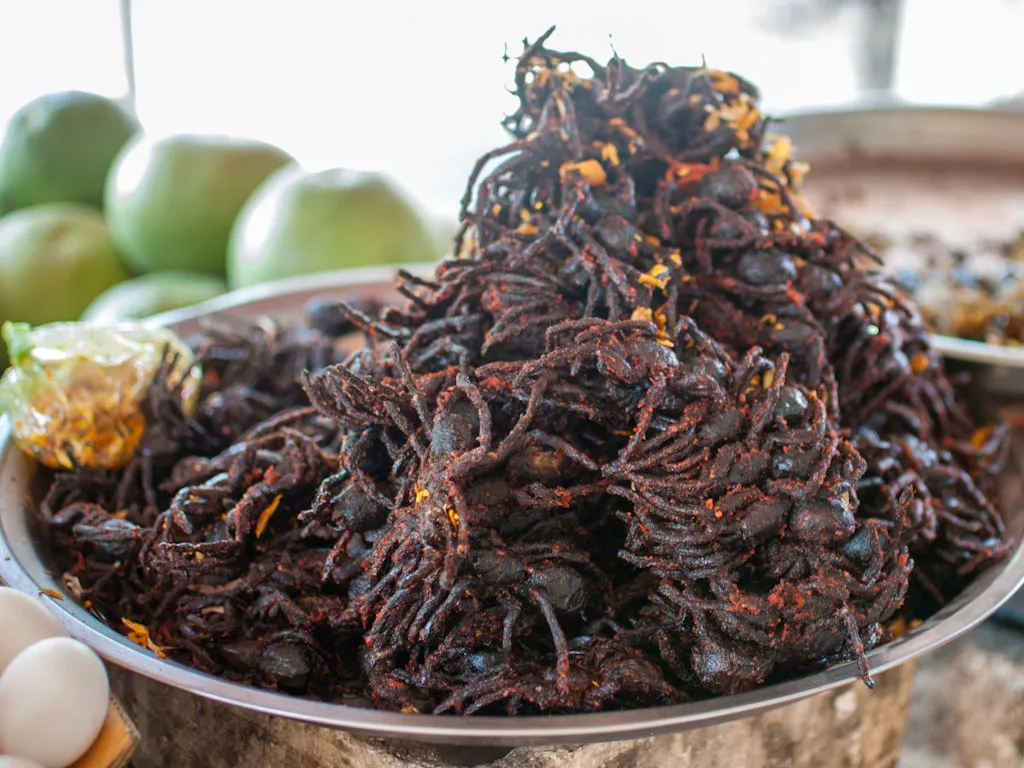
Besides crickets and roaches, other insects can be included in your tarantula’s diet to ensure variety and comprehensive nutrition. Diversifying the insect sources helps ensure that your tarantula receives a range of nutrients and avoids potential nutritional deficiencies. Researching and selecting other appropriate insects can enrich your tarantula’s diet. Consider the insects’ nutritional profiles, ease of availability, and suitability for your tarantula’s size and stage of life. Offering a diverse range of insects also adds enrichment to the tarantula’s environment, allowing it to exhibit natural hunting behaviors, which in turn supports the spider’s overall well-being.
Mealworms
Mealworms are a readily available food source, commonly found in Cambodia. They are easy to store and can be purchased from many pet shops. While mealworms can be a part of a tarantula’s diet, they should not be the sole food source, as they have a relatively high-fat content and can be low in certain nutrients. It is important to feed mealworms in moderation, and to gut-load them with nutritious food before offering them to your tarantula. This ensures that your pet receives the best nutritional value. The size of the mealworms is also a factor; choose mealworms that are appropriate for the size of your tarantula to prevent any issues.
Superworms
Superworms (Zophobas morio) are another option available in Cambodia, offering a good source of protein. Like mealworms, superworms are easy to store and are often found at pet stores. Superworms are larger than mealworms, so they are more appropriate for bigger tarantula species. Superworms should be fed in moderation, as they also have a high-fat content. They should be gut-loaded to provide the tarantula with the maximum amount of nutrients. It’s important to note that superworms can bite, so removing them promptly if they are not eaten is essential. When properly managed and used with care, superworms can be a good supplement to a tarantula’s diverse diet.
Shopping for Tarantula Food in Cambodia
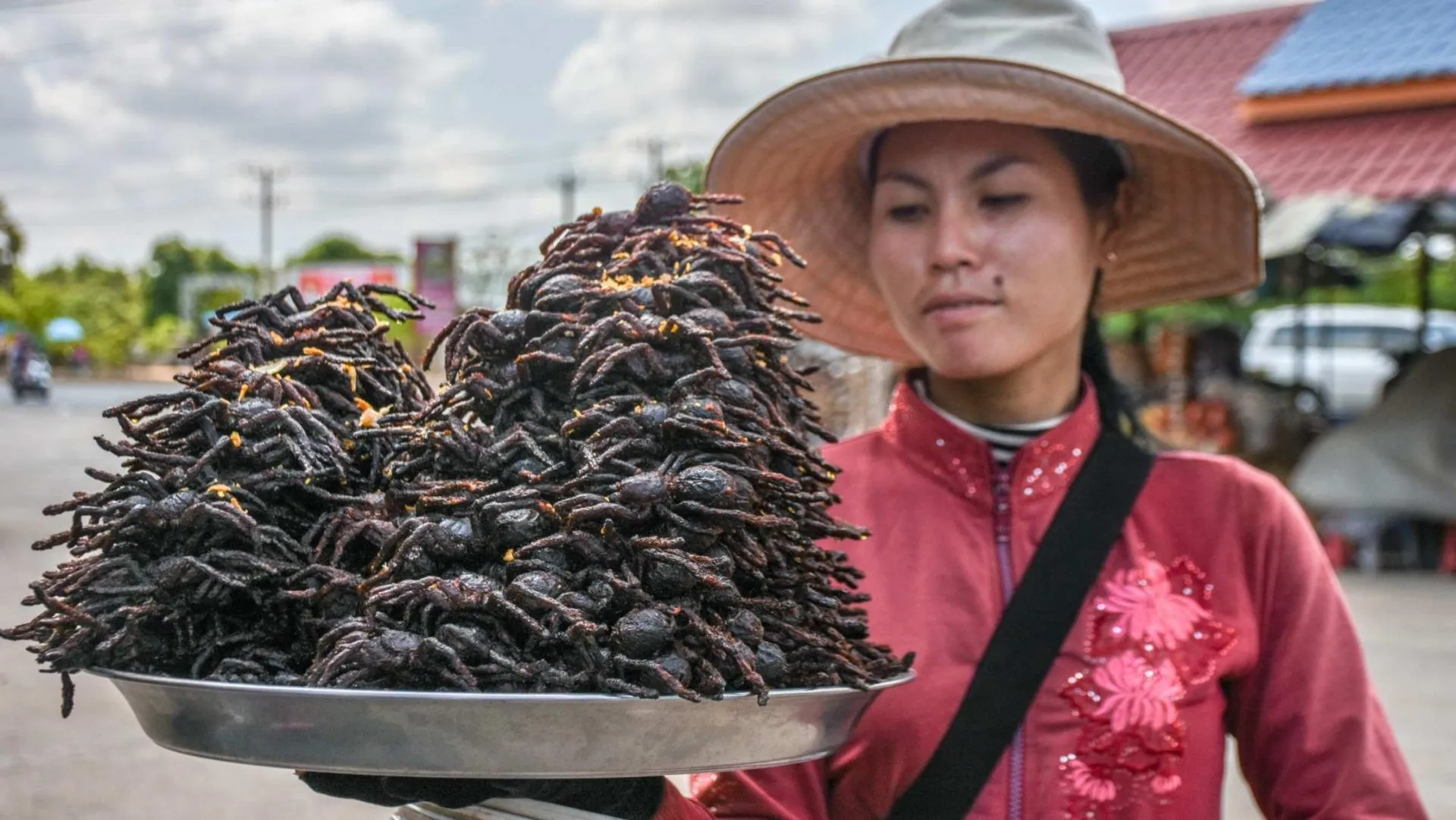
Finding a reliable source for tarantula food in Cambodia is a crucial aspect of responsible pet ownership. The availability and quality of food can vary greatly depending on where you purchase it. Knowing where to look and what to look for will help you provide your tarantula with the best possible nutrition. It’s also important to consider the overall cost and convenience of purchasing food. Regular and consistent access to quality food is paramount for maintaining the health of your tarantula. Explore different options and suppliers to find the best fit for your needs.
Where to Buy Tarantula Food
The options for purchasing tarantula food in Cambodia include local pet shops, specialized suppliers, and online marketplaces. Each option comes with its own set of advantages and disadvantages. Consider your location, the variety of food available, the price, and the quality when choosing where to buy your tarantula food. Researching different suppliers and comparing options will help you make the best decision for your pet. Developing a consistent source will ensure that you can always provide for your tarantula. Consider factors such as the supplier’s reputation, and how they handle and store the food, to ensure your pet’s health.
Local Pet Shops and Suppliers
Local pet shops and suppliers often offer a convenient option for buying tarantula food. They typically carry crickets, mealworms, and sometimes other insects. This can be a good option for those who prefer to inspect the food before purchasing it. However, the selection may be limited, and prices can sometimes be higher compared to other sources. Building a relationship with a local pet shop owner can be beneficial, as they can provide valuable advice and potentially source specific food items for you. Checking the conditions in which the insects are kept is important to ensure the quality of the food. Supporting local businesses also contributes to the community.
Online Marketplaces and Availability
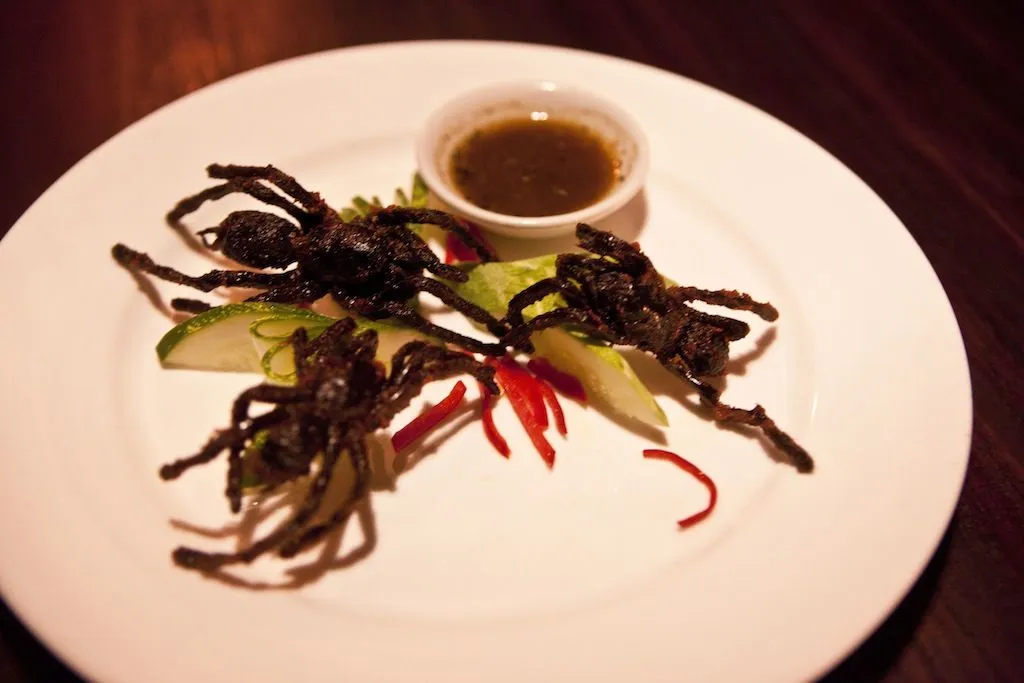
Online marketplaces provide a wider selection and often more competitive prices for tarantula food. You can find various insects, including those that may not be readily available in local stores. Shopping online allows you to compare prices from different suppliers, potentially saving you money. However, you must consider shipping costs and delivery times, particularly in Cambodia. Ensure that the seller has a good reputation and offers guaranteed delivery and healthy insects. Carefully review reviews and ratings before making a purchase to ensure that the seller is reliable. Taking these steps helps ensure your tarantula receives healthy food.
Factors to Consider When Choosing Food
Choosing the right food for your tarantula involves several factors, including the quality, size suitability, and whether it is free from pesticides or contaminants. Making the right choices will directly impact the health and longevity of your pet. Understanding these aspects can help you make informed decisions and ensure that your tarantula receives the best possible nutrition. Being proactive and informed about food choices will help maintain the health and vitality of your tarantula.
Food Quality and Nutritional Value
The quality and nutritional value of the food you provide directly impact your tarantula’s health. Always prioritize fresh food that has been properly stored. Observe the insects carefully before feeding them to your tarantula. They should appear healthy and active, not sluggish or deformed. Providing gut-loaded insects can significantly increase the nutritional value of the food, as the insects will contain the nutrients from the food they consumed before being fed to your pet. Supplementing the food with vitamins and minerals might be considered, but only after assessing your tarantula’s overall diet and needs. Prioritizing food quality is a critical aspect of tarantula care.
Sizing and Suitability for Your Tarantula
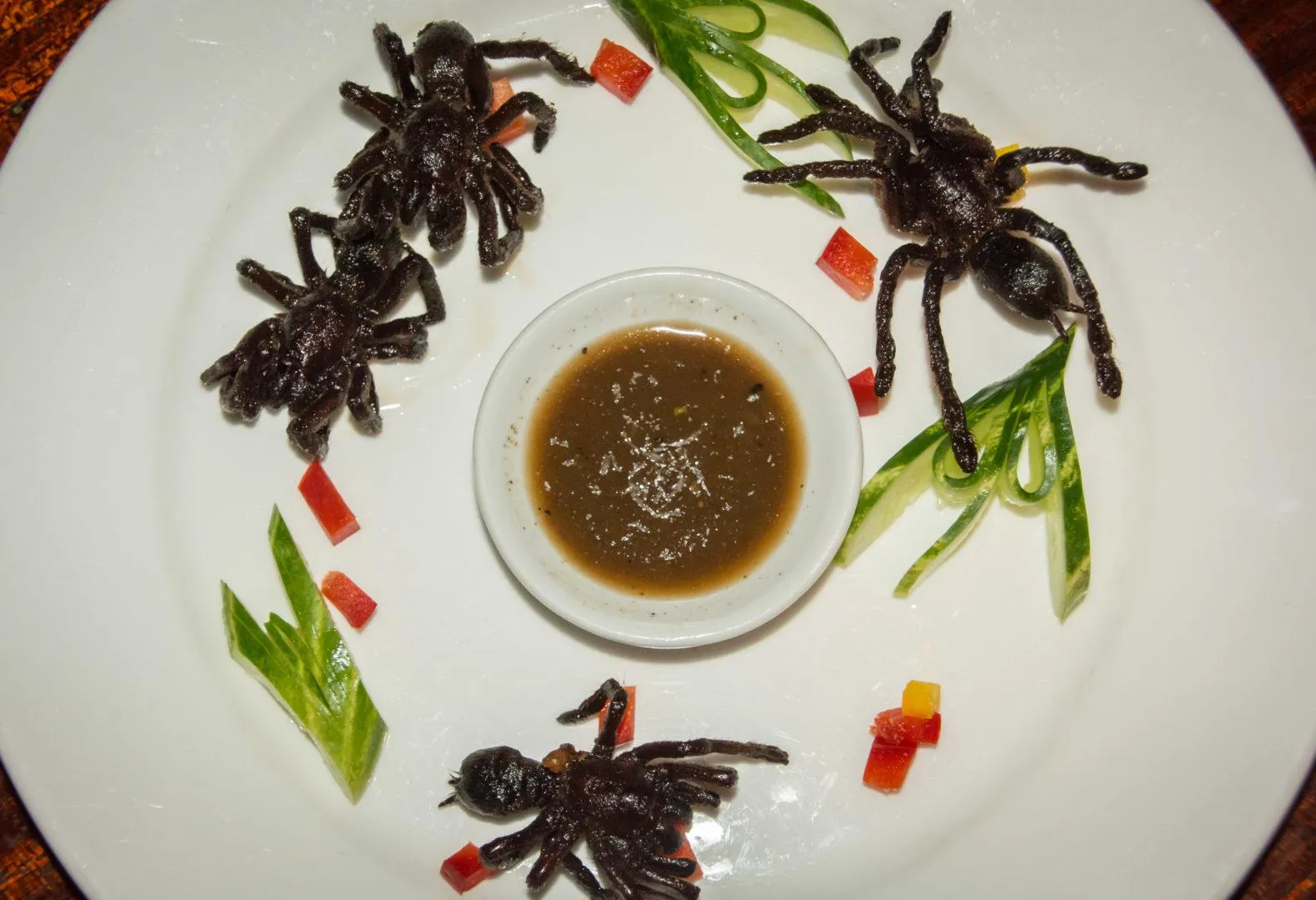
The size of the food you provide must be appropriate for your tarantula’s size and age. Overly large insects can pose a risk, potentially injuring or even overwhelming your tarantula. The ideal size is generally the size of the tarantula’s carapace (the top part of its body). For spiderlings, smaller insects like pinhead crickets or small mealworms are suitable. As the tarantula grows, you can gradually increase the size of the insects. Observe your tarantula’s feeding behavior and adjust the size of the food accordingly. Avoiding issues related to size helps ensure that your tarantula feeds effectively and safely. Regularly check the size of your tarantula and its food to ensure it is appropriate.
Avoiding Pesticides and Contaminants
Pesticides and other contaminants can be extremely harmful to tarantulas, causing illness or even death. Always source your tarantula food from reliable suppliers who ensure their insects are raised in a pesticide-free environment. When collecting insects from the wild, avoid areas that may have been treated with pesticides, such as gardens, agricultural fields, or areas near buildings. Thoroughly inspect any insects you collect, and do not feed them to your tarantula if you have any doubts about their safety. Washing insects before feeding them to your tarantula is also a good practice, particularly if you are unsure about their source. Prioritizing the avoidance of pesticides and contaminants is essential for safeguarding your tarantula’s health.
Ensuring Proper Food Handling
Proper food handling is essential for the health and safety of your tarantula. This includes the storage of the food, the process of preparing it, and the safe removal of uneaten food from the enclosure. Careful handling prevents contamination and ensures your pet gets the best possible nutrition. Proper food handling and storage will reduce the risk of disease and maintain a healthy environment for your pet. Consistent attention to these practices is a sign of a responsible tarantula keeper.
